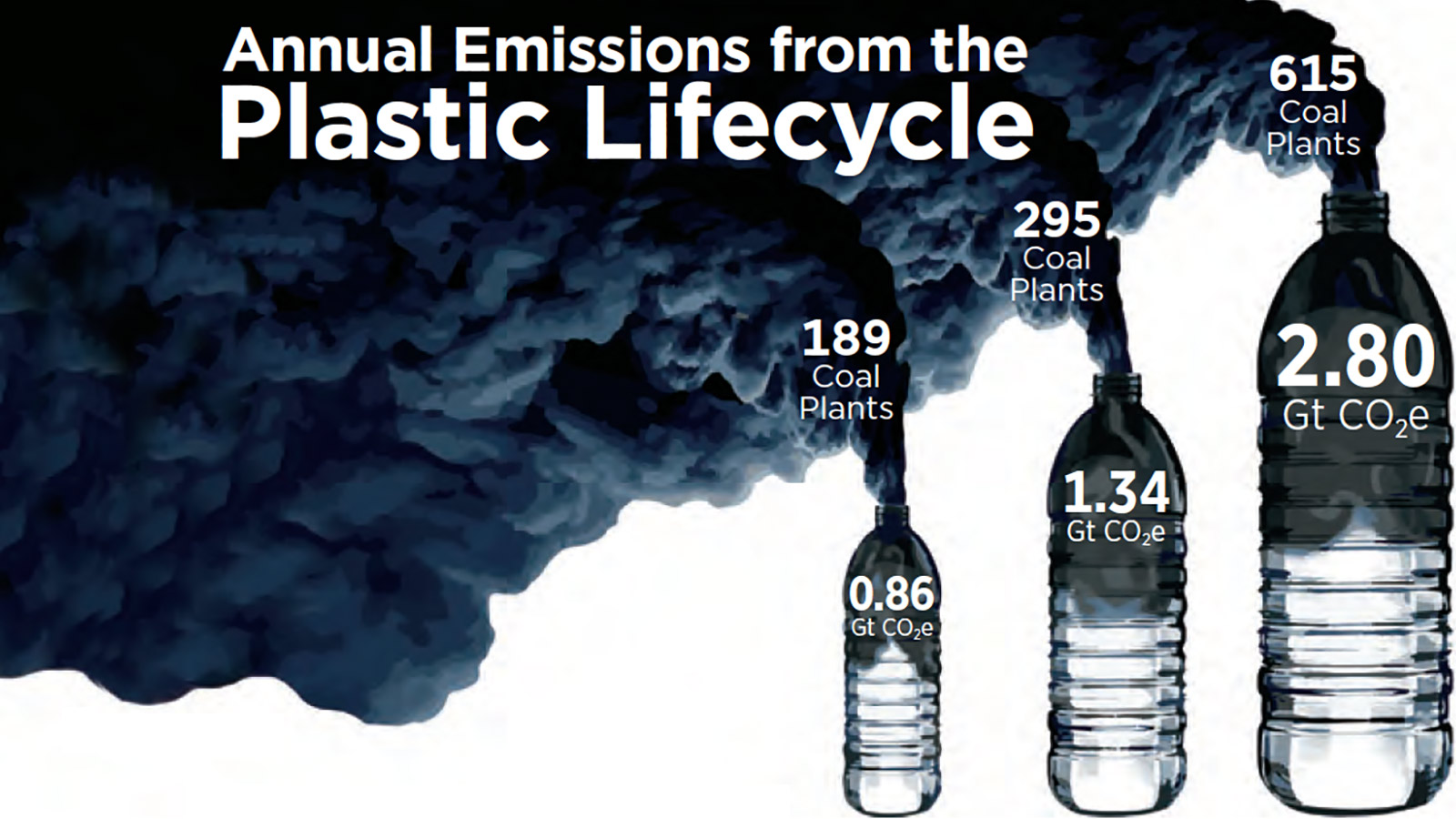When you think about plastic, what comes to mind? Microplastics at the bottom of the Mariana Trench, whales dying with truckloads of garbage in their bellies, that zero-waste Instagram influencer you follow?
A new report shows it’s high time to think more about the fossil fuels that go into making those plastic products. The global plastic industry is on track to produce enough emissions to put the world on track for a catastrophic warming scenario, according to the Center for International Environmental Law analysis. In other words, straws aren’t just bad for unsuspecting turtles; plastic is a major contributor to climate change.
If the plastic industry is allowed to expand production unimpeded, here’s what we’re looking at: By 2030, global emissions from that sector could produce the emissions equivalent of more than 295 (500-megawatt) coal plants. By 2050, emissions could exceed the equivalent of 615 coal plants.
That year, the cumulative greenhouse gas emissions from production of single-use plastics like bags and straws could compose between 10 and 13 percent of the whole remainder of our carbon budget. That is, the amount of CO2 we’re allowed to emit if we want to keep emissions below the threshold scientists say is necessary to ensure a liveable planet. By 2100, even conservative estimates pin emissions from plastics composing more than half of the carbon budget.
So, congrats on ordering that metal straw from Amazon! But the report shows that the plastics industry is still planning on a major expansion in production.
Here are a few more takeaways from the report, which looked at the emissions produced by the plastics industry starting in 2015 and projected what emissions from that sector could look like through the end of the century:
- Of the three ways to get rid of plastics — recycling, landfilling, or incinerating — incinerating is the most energy intensive. In 2015, emissions from incinerating plastic in the United States were estimated to be around 5.9 million metric tons of CO2 equivalent.
- This year, production and incineration of plastic products will make as many emissions as 189 coal power plants — 850 million metric tons of greenhouse gases.
- Plastics that wind up in the ocean could even fuck with the ocean’s ability to do what it has historically done a superb job at: sequestering carbon. That’s because the phytoplankton and lil ocean critters that help capture the CO2 at the surface of the ocean and drag it under are being compromised by — you guessed it — microplastic.
But it doesn’t look like the industry is going to slow its roll on refining oil for plastics anytime soon. In 2015, 24 ethylene facilities in the U.S. produced the emissions equivalent of 3.8 million cars. There are 300 more petrochemical facilities underway in the U.S. Two of those, one being built by ExxonMobil and another by Shell, could produce emissions equivalent to 800,000 new cars on the road per year.
So if you’re gonna boycott single-use plastics, keep in mind that you’re not just doing it for the turtles — you’re doing it for us.



